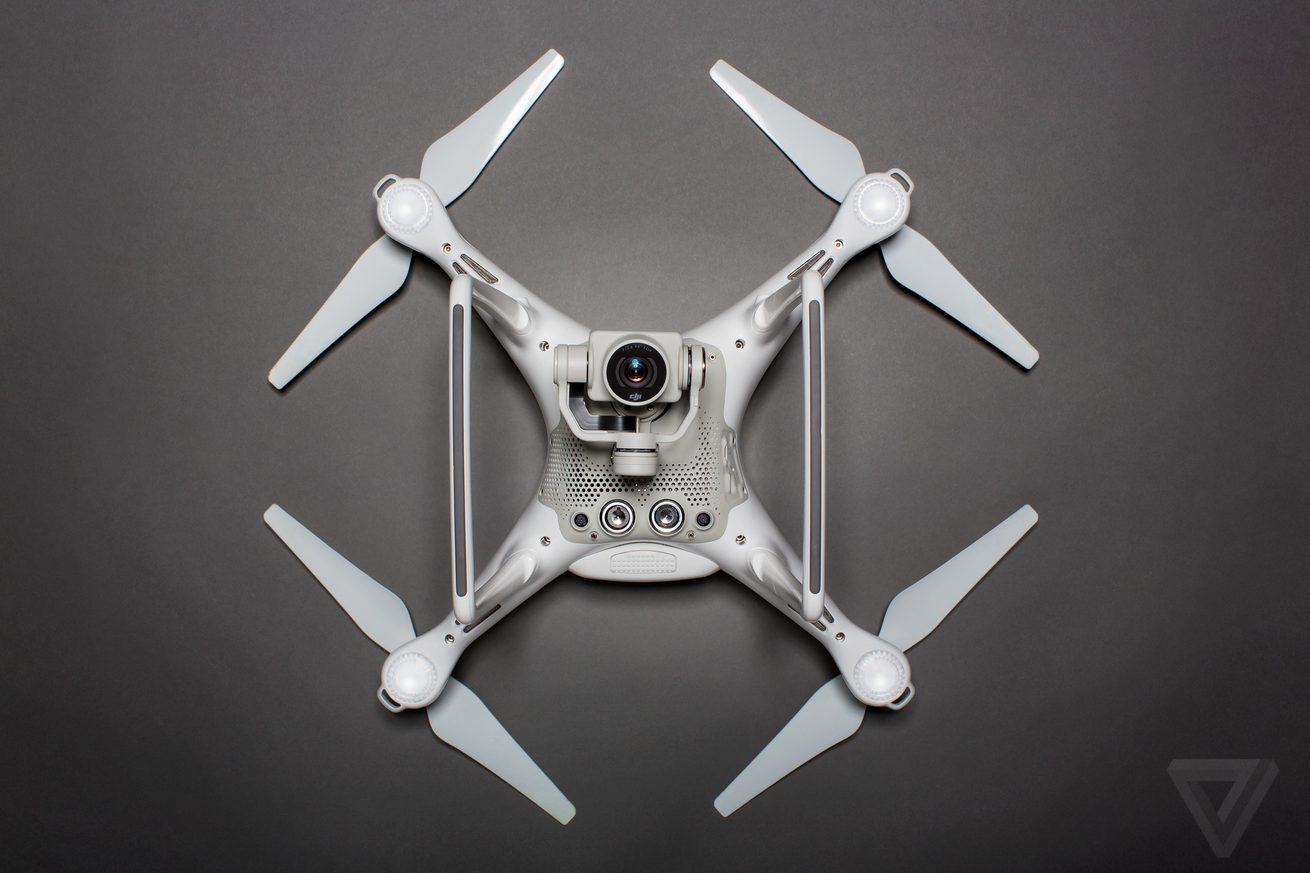
DJI’s New Drone Can Follow You Automatically And Avoid Obstacles
DJI’s new drone, the Phantom 4, is the first consumer unit that can see the world around it and adjust accordingly, the next big step towards a truly autonomous aircraft. Try and drive it into a wall, the Phantom 4 will put on the brakes. If you ask it to fly from your position to a spot across a river, and there is a bridge in between, it will make a judgement call: increase speed to clear the obstacle or, if that isn’t possible, stop and hover in place, awaiting your next command.
The Phantom 4 accomplishes this feat with the help of five cameras: two on the front and two on the bottom, plus the main 4K camera that has always been onboard to capture video. The images captured by these cameras are run through computer vision software which constructs a 3D model of the world around it that the drone can intelligently navigate.
I got to spend a few hours with the Phantom 4 and was impressed with how well its autonomous features worked. It easily picked up and avoided walls and buildings. It even detected and avoided individual people, allowing for some rather daring shots where the drone autonomously raced towards a human, gaining altitude just in time to whiz over our heads. “With the Phantom 4, we are entering an era where even beginners can fly with confidence,” said DJI CEO Frank Wang. “People have dreamed about one day having a drone collaborate creatively with them. That day has arrived.”

TapFly lets beginners skip manual controls entirely. This feature is especially nice for helping to smooth out video footage. I have always struggled to pan horizontally while flying, often adding in distracting twitches and jerks while trying to perfect my framing. This has been a category-wide problem. Now you can tap on your screen and the drone will automatically adjust its orientation with a single, smooth motion. Combining TapFly and obstacle avoidance also let me capture much tighter close-ups of faraway buildings, passing overhead with just a few feet of buffer, a much riskier shot than I would feel comfortable capturing manually.The new sensors also make the Phantom 4 more stable when hovering. It now has two cameras and two ultrasonic sensors on its belly, twice what the last version had. DJI says that overall the new unit is five times as good at holding its position, and in the few hours we spent flying it I was shocked at how stable it was while resting in place. Previous version of the Phantom would stay in place, drifting and correcting a few inches depending on wind. The Phantom 4 looked as though it were frozen in air.
The second new autonomous feature, ActiveTrack, is even more impressive. Trace a circle around a subject you want to keep it in frame: a runner, race car, or mountain bike. The Phantom’s onboard computer builds a 3D model of that subject and then automatically tracks to keep it in frame. The pilot can use the remote to make fine-grained adjustments to the focus, framing or camera settings, or they can just sit back and let the drone do all the work.
While it’s moving forward, the Phantom 4 can track and avoid obstacles at the same time. It can also do it from much closer in. Follow modes that use GPS typically have an effective range of 10 to 15 feet. With ActiveTrack that shrinks to just 4 to 5 feet.
I’ve been piloting for three years now, but I still struggle to execute a perfect 360-degree orbit around a subject, even one that is standing still. Orbiting a moving target is trickier still. With ActiveTrack you just pick a subject and hold left or right on the stick to execute a perfect orbit. It’s fairly mind-blowing to set yourself as the target, then capture a perfect tracking orbit of a conversation while walking across a field. Continue reading > > >
via The Verge

No Comments